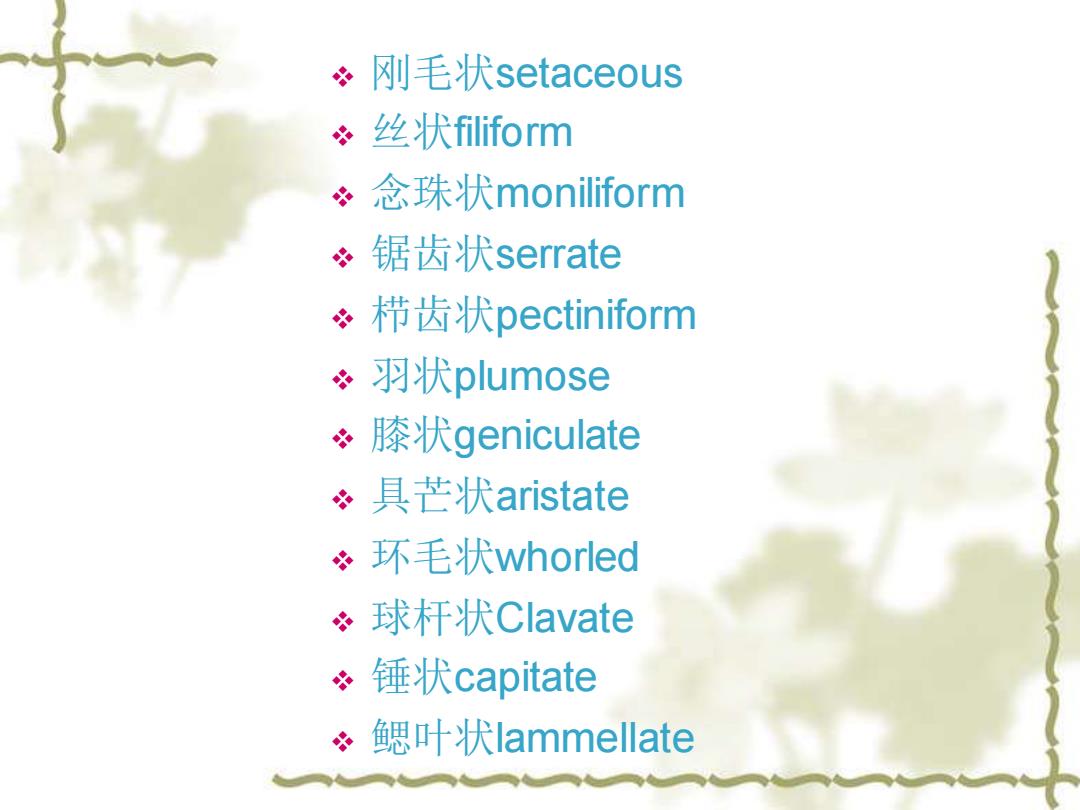
14 Coleoptera 鞘翅目
Coleoptera 鞘 翅 目

Coleoptera Coleo=sheathes Ptera=wings; Forewings thickened into hard sheaths,or elytra, covering hind wings
Coleoptera Coleo=sheathes Ptera= wings; Forewings thickened into hard sheaths, or elytra, covering hind wings

Identifying character Chewing mouthparts with well-developed mandibles. Antennae with various shape and size Forewings modified into elytra The largest order of extent animals Found in just about every ha Elytron (Fore Wing) Pronotum is quite prominent Hind Wing Holometabolous
Identifying character ❖ Chewing mouthparts with well-developed mandibles. ❖ Antennae with various shape and size ❖ Forewings modified into elytra ❖ The largest order of extent animals ❖ Found in just about every habitat ❖ Pronotum is quite prominent ❖ Holometabolous

characters uesd in mxp the identification The principal characters of beetles used in identification are those of the head,antennae, thoracic sclerites,legs, elytra,and abdomen
characters uesd in the identification The principal characters of beetles used in identification are those of the head, antennae, thoracic sclerites, legs, elytra, and abdomen

1、Head In the Curculionoidea the head is more or less prolonged forward into a snout;the mouthparts are reduced in size and are located at the tip of the snout,and the antennae arise on the sides of it The families in the Curculionoidea are sometimes placed in a separate suborder,the Rhynchophora
1、Head In the Curculionoidea the head is more or less prolonged forward into a snout; the mouthparts are reduced in size and are located at the tip of the snout, and the antennae arise on the sides of it The families in the Curculionoidea are sometimes placed in a separate suborder, the Rhynchophora

2、Antennae The antennae of beetles are subject to considerable variation in different groups
2、Antennae The antennae of beetles are subject to considerable variation in different groups

2、Antennae ●Filiform ●noniliform ●Serrate Clavate Capitate Lamellate Flabellate
❖ Clavate ❖ Capitate ❖ Lamellate ❖ Flabellate ⚫Filiform ⚫moniliform ⚫Serrate 2、Antennae

Moniliform Setaceous Clavate Filiform Capitate Serrate Plumose Lamellate Pectinate Flagellum Aristate Pedicel Geniculate Scape
Setaceous Filiform Moniliform Clavate Capitate Serrate Aristate Pectinate Lamellate Plumose Scape Pedicel Flagellum Geniculate

÷刚毛状setaceous 。丝状filiform 冬念珠状moniliform 冬锯齿状serrate ÷栉齿状pectiniform ÷羽状plumose ÷膝状geniculate 。具芒状aristate 环毛状whorled ÷球杆状Clavate 锤状capitate 鳃叶状lammellate
❖ 刚毛状setaceous ❖ 丝状filiform ❖ 念珠状moniliform ❖ 锯齿状serrate ❖ 栉齿状pectiniform ❖ 羽状plumose ❖ 膝状geniculate ❖ 具芒状aristate ❖ 环毛状whorled ❖ 球杆状Clavate ❖ 锤状capitate ❖ 鳃叶状lammellate

3、Thorax The pronotum and scutellum are normally the only thoracic areas visible from above. A few beetles have notopleural sutures, which separate the pronotum from the propleura The prosternum often has a process or lobe extending backward between the front coxae;sometimes this process is spinelike
3、Thorax ❖ The pronotum and scutellum are normally the only thoracic areas visible from above. ❖ A few beetles have notopleural sutures, which separate the pronotum from the propleura ❖ The prosternum often has a process or lobe extending backward between the front coxae; sometimes this process is spinelike